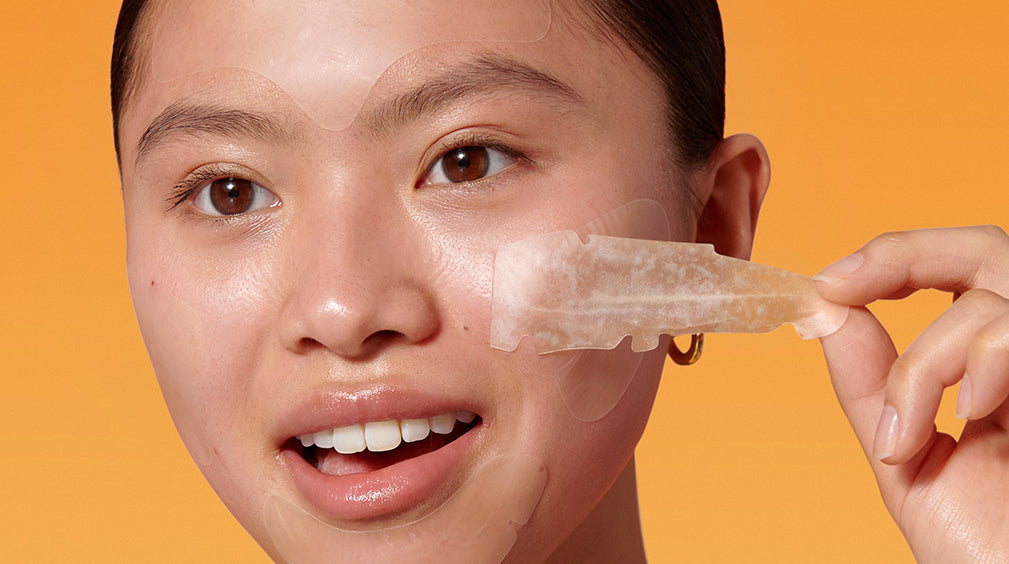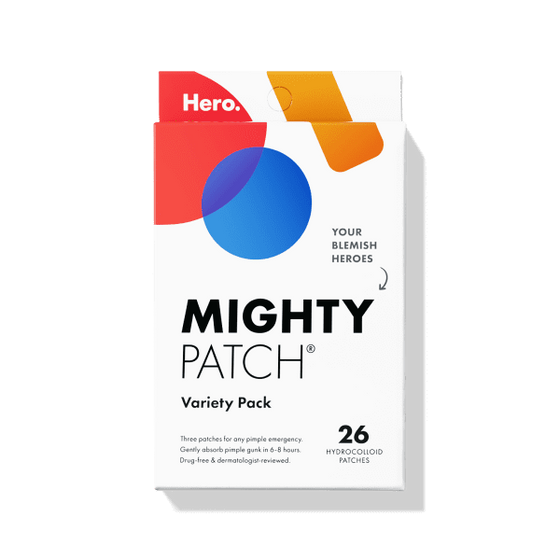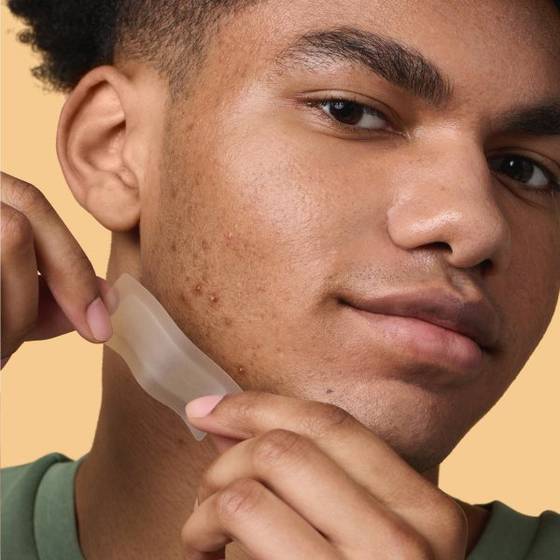
Got a pimple? That’s totally normal, since 50 million Americans experience acne every year. Luckily, this handy little guide will help you understand how to take charge of your breakouts, one pimple at a time.
Not all acne was created equal. What works for blackheads won’t work for whiteheads or papules and using the wrong treatment could even make your acne worse. Ahead, we’ll walk through the six main types of acne and some tried-and-true methods to get rid of each.
Still not sure what patch to try? Check out our Bundle Builder! Save up to 15-25% off and find your new fave ance patch! Plus snag a free sample.

Blackheads
This pimple is probably the easiest one to identify – it looks like it sounds, a tiny black dot. Blackheads are a mixture of dead skin cells, sebum (oil), bacteria and grime that clog your pores. They appear black because the top of the pore is open, so air or pollution oxidizes the gunk. Blackheads are most commonly found on the nose or T-zone, but can appear anywhere on your skin.
How to minimize the appearance of blackheads: Choose a cleanser with both physical and chemical exfoliants to remove dead skin and avoid clogs. Follow up with Pore Release, a powerful, derm-tested treatment that reduces blackheads and minimizes the appearance of clogged pores in just 7 days*.
Whiteheads
Whiteheads are formed in a similar manner to blackheads – when dead skin, excess oil and bacteria get stuck inside pores. The difference is that whiteheads are covered with a thin layer of skin, which makes them appear as a white bump.
How to minimize the appearance of whiteheads: Avoid touching your face (especially with dirty fingers) or popping your whiteheads. Try a combination of Mighty Patch to draw out the pore clogging gunk, Pimple Correct to exfoliate and eliminate the excess oil and pus, and Clarifying Prebiotic Moisturizer for a boost of hydration.
RELATED READ: Face Mapping: What Your Acne Could Be Telling You
Papules
These small pink or red dome-shaped bumps are caused by an overproduction of sebum, so they are most commonly found in people with oily skin. They form when a follicular wall breaks down and the white blood cells rush in and come into contact with bacteria. This causes inflammation and can sometimes feel sore.
How to minimize papules: Avoid skin irritants, excessive exfoliation, and heavy cosmetics or creams. It also helps to keep hair, clothing and phones away from your skin as much as possible. A daily routine that is designed to balance oil, exfoliate, and hydrate (like Clear Collective) is ideal for anyone prone to papules. And always opt for a non-greasy sunscreen that won’t clog pores.
Pustules
When you hear the word “pimple,” you probably picture a pustule. These bulging patches of skin are filled with pus. Basically, excess oil and dead skin cells clog pores, come into contact with bacteria, and trigger an inflammatory response by the immune system. The inflammatory nature of pustules means that they can sometimes be painful and prone to scarring.
How to minimize pustules: Try your best to resist the urge to pop. Pus’ worst enemy is our blemish hero – Mighty Patch. Hydrocolloid patches absorb the pus in just a few hours or overnight. Following up with Rescue Balm after the gunk is gone will help soothe and replenish post-pimple skin.
Nodules
Also inflammatory, but not as easy to treat as pustules, nodular acne can occur when Cutibacterium acnes (C. acnes) bacteria gets trapped under the skin, ultimately leading to infection and inflammation. The nodules are hard, very painful and can last for weeks or even months.
How to minimize nodules: Book an appointment with your dermatologist, the sooner the better to reduce potential scarring. They may prescribe an oral medication or cortisone injections to get nodular breakouts under control. At home, use skincare products that contain Salicylic Acid to help clear pores regularly.
Cysts
Like nodules, cysts are large (sometimes even giant), painful breakouts deep within your skin. However, cystic acne bumps are softer than nodules. If a cyst bursts or is popped, the acne infection can spread and cause additional breakouts. Cystic acne can linger for years, affect large areas of your skin and often leaves permanent scars.
How to minimize cysts: This is another scenario where it’s best to see a professional for cyst treatment or removal, especially if the lesions are large, painful and actively scarring. For immediate relief at home, try applying an ice cube directly to the breakout for a few seconds to constrict the small blood vessels feeding the cysts. Also, choose a skincare routine that’s formulated for acne-prone skin – preferably one that’s free of any skin-irritating artificial colors, fragrance or parabens.
For more information about how to identify and treat every type of acne, click here.
*Based on self-assessments in a 14-day clinical trial
The information provided in this article is for general knowledge and informational purposes only and does not constitute medical advice. It is not intended to be a substitute for professional medical advice, diagnosis, or treatment. Always seek the advice of a qualified healthcare provider with any questions you may have regarding a medical condition.













